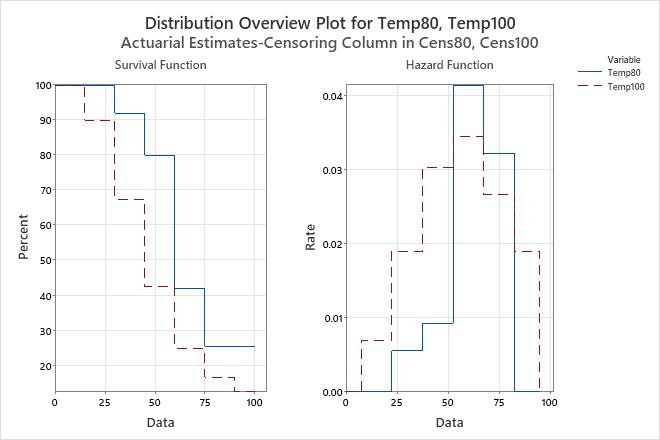The hazard function provides a measure of the likelihood of failure as a function of how long a unit has lasted. The nonparametric hazard plot helps to determine what distribution might be appropriate for modeling these data should you decide to proceed with parametric estimation methods.
When you do not select a distribution (when you choose to perform a nonparametric analysis), the hazard plot is a step function with steps at the midpoints of each interval. This example shows the survival function that is calculated when using the actuarial estimation method.
When you hold your pointer over each step, Minitab displays the hazard rate and failure time.
Example output

Interpretation
For the engine windings data, a hazard function for each temperature variable is shown on the hazard plot. In this hazard plot, the hazard rate for both variables increases in the early period, reaching a peak in the interval from 50 to 75 hours. At approximately 38 hours, the likelihood of failure is slightly less than 0.01 (1%) at a temperature of 80° C and 0.03 (3%) at a temperature of 100° C.
